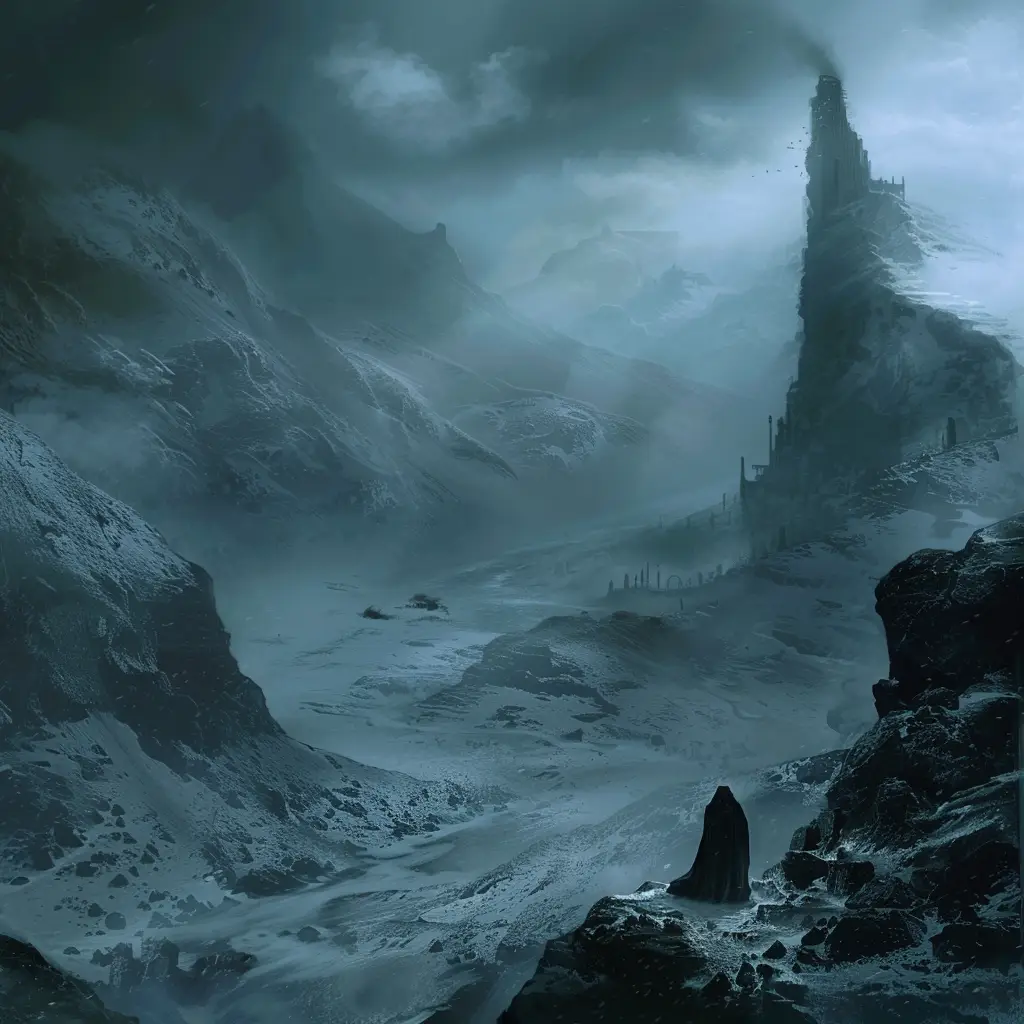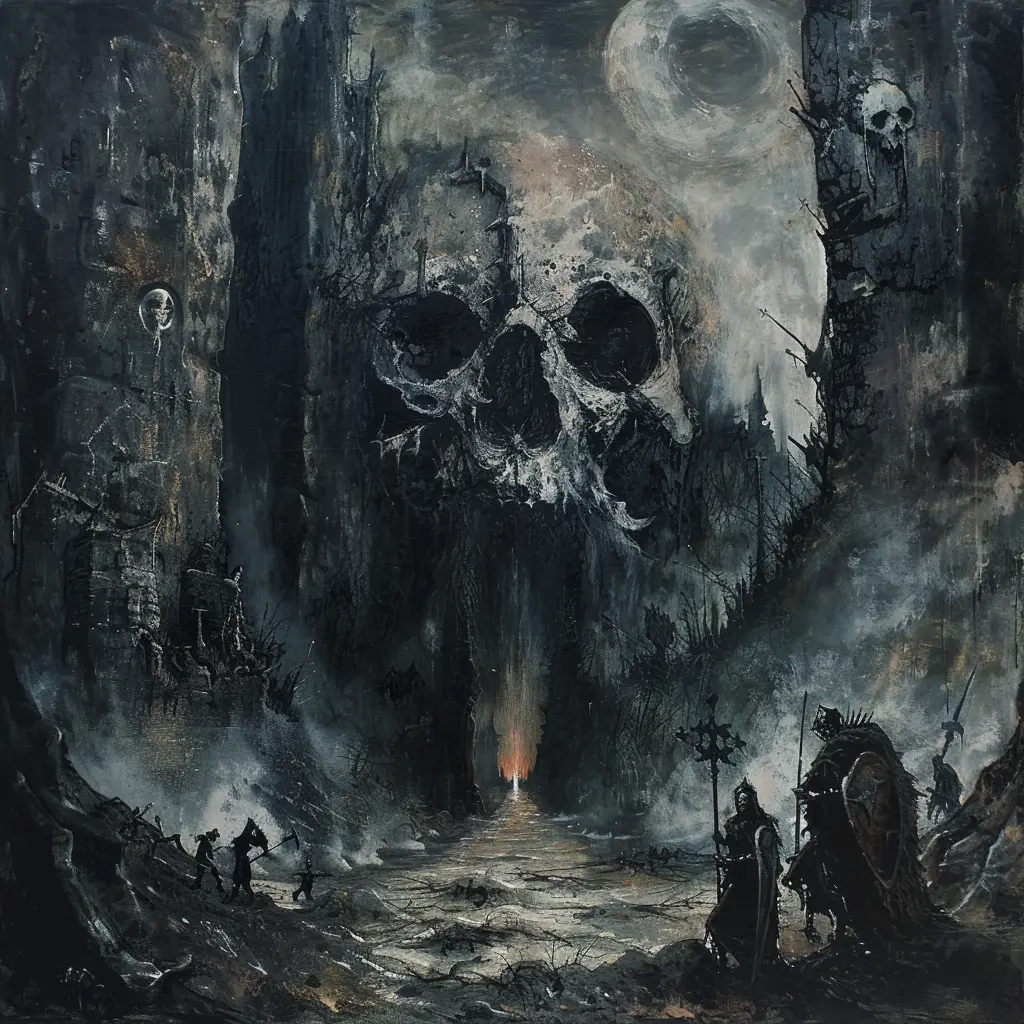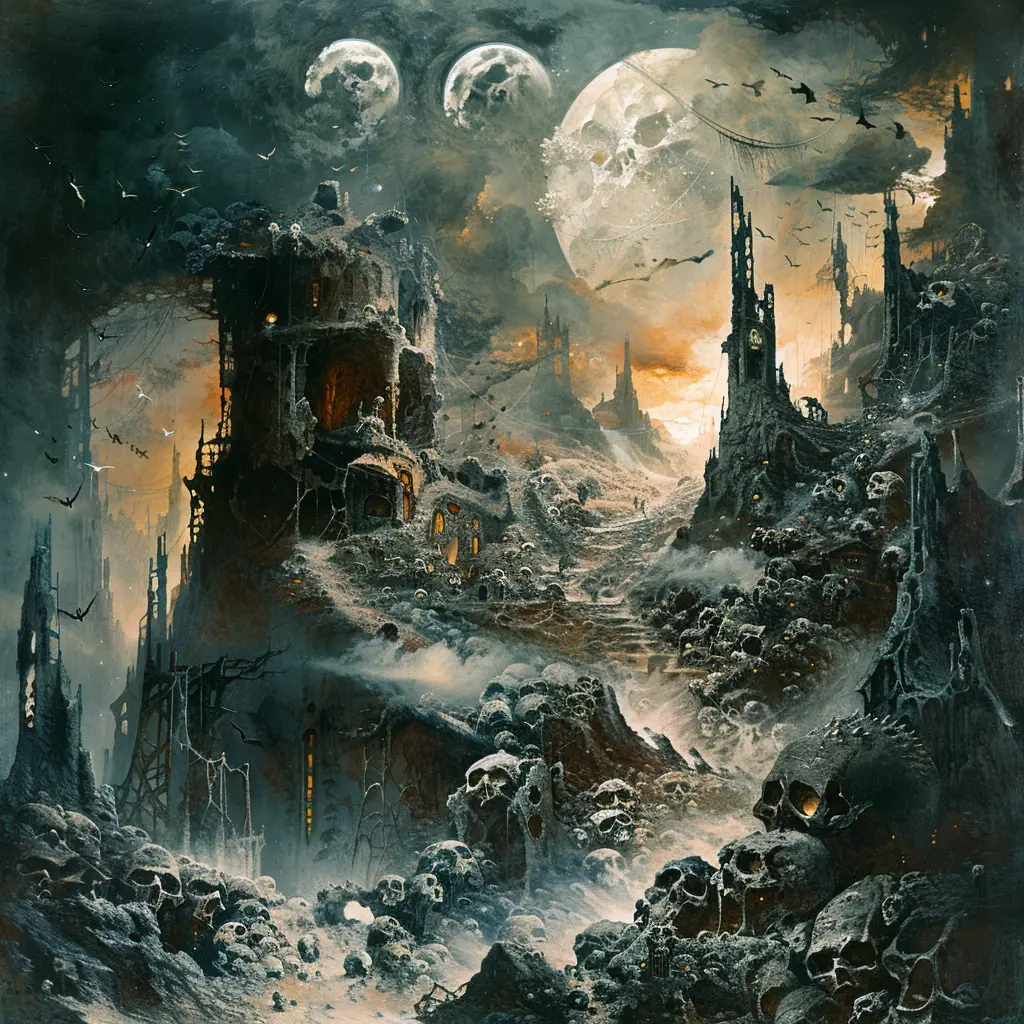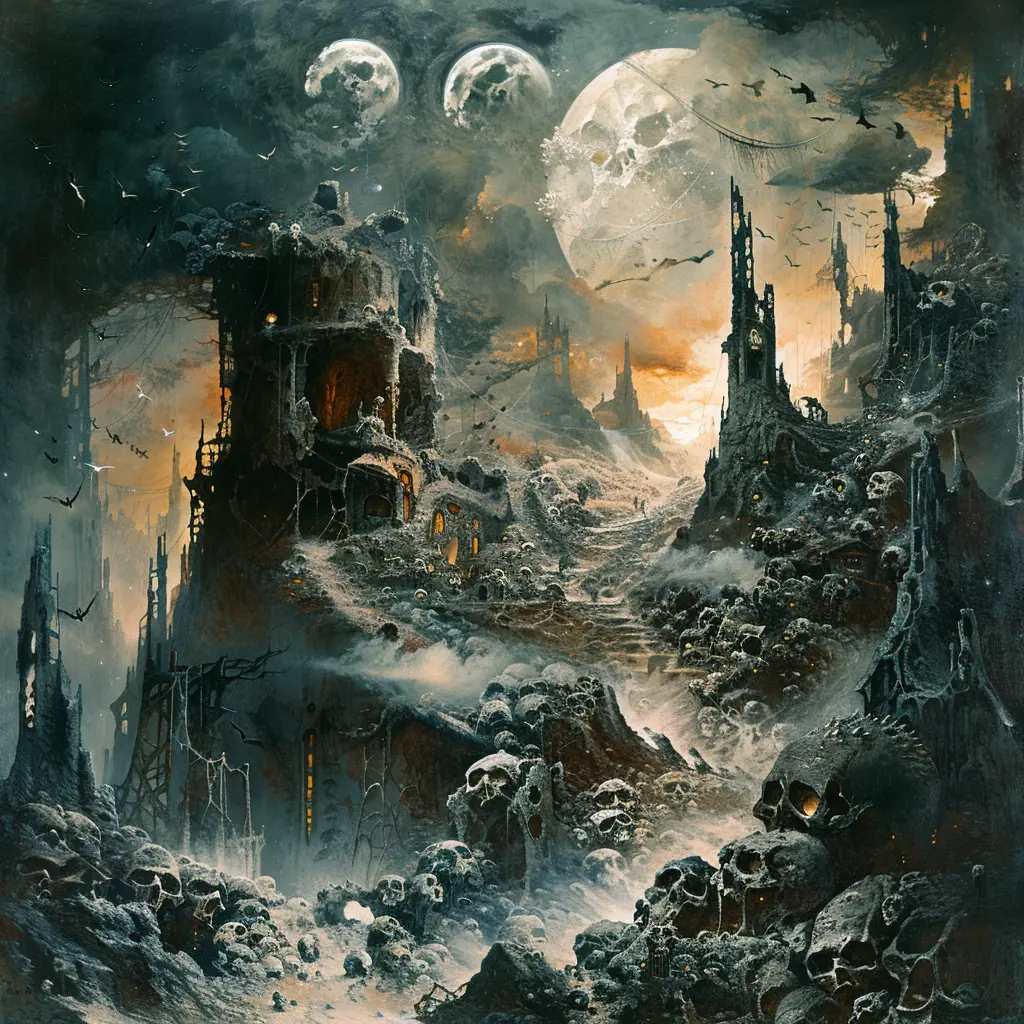Helheim is the realm of the dead in Norse mythology, often associated with the goddess Hel, who rules over this domain. It serves as a place for those who did not die a heroic or honourable death and is one of the key aspects of the Norse afterlife.
Home of the Dead:
Helheim is primarily the dwelling place for souls who did not die in battle, which includes those who died of sickness, old age, or misfortune. It is often seen as a place of shadows and cold rather than punishment.
Unlike the fiery realm of Muspelheim or the heroic Valhalla, Helheim offers a more sombre and tranquil afterlife experience.
Rule of Hel:
Hel, the daughter of Loki and the giantess Angerboda, governs this realm. She is often depicted as a half-living, half-dead being, representing the dual nature of life and death.
As the ruler, Hel decides the fate of souls entering her domain, but she is not portrayed as a vengeful figure; instead, she embodies acceptance of death.
Geography and Environment:
Helheim is characterized by its cold and dark landscape, often depicted as a gloomy, mist-covered realm with icy rivers and a forbidding atmosphere.
The realm is commonly associated with the Gjallarbru, a bridge leading to Hel, which souls must cross to enter this afterlife.
Cultural Significance:
Helheim reflects the Norse perspective on death and the afterlife, emphasizing that not all souls find glory or honour after death.
It serves as a reminder of mortality and the inevitability of death, reinforcing the importance of living honourably in life.
Connection to Other Realms:
Helheim is part of Niflheim and is often associated with the icy and shadowy aspects of this primordial realm. The two are interconnected, with Helheim serving as a specific domain within Niflheim.
The realm is depicted in contrast to Valhalla, where warriors who die heroically are welcomed.
Mythological Events:
Helheim features in several Norse myths, including the story of Hermod, who travels to Helheim to negotiate the return of Baldr, the beloved god who dies and goes to Helheim.
The realm emphasizes themes of loss, mourning, and the importance of remembrance in Norse culture.
Helheim is a significant realm in Norse mythology, representing the afterlife for those who did not die heroically. Its importance lies in its portrayal as a place of acceptance and tranquillity, emphasizing the Norse understanding of death and the cycle of life within their cosmology.



